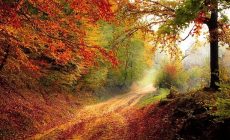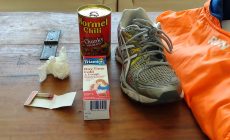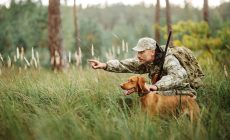Finding safe and edible food is a very important skill when you are forced to survive outdoors without anything. We are very aware that in a disaster anything could happen and we may lose all of our stored resources in an instant. Knowing how and where to find safe edible natural food sources can mean the difference between life and death.
Natural food
If you are forced to survive in the wilderness it is important to understand that on the first stage of a survival situation the most appropriate and easiest food you have access to with necessary carbohydrates would be plants. Having said so, finding something to in the wilderness is easy because it is full of natural food ranging from plants to insects. Knowledge on which plant or insect is safe and edible (hemp food definitely is) will make the difference as well. Varying your diet will make sure you get the appropriate proportions of fat, protein, carbohydrates, minerals and vitamins. Meat and fish are also good sources of protein and fat and would provide virtually everything a long-term survivor would need.
Wild edible plants
Finding edible plants in the wilderness is easy except when you are in the middle of a desert. Depending on the time of the year you are sure to always find edible plants. Knowing a thing or two about safe and edible plants will greatly increase your chances of survival.
Here’s a list of poisonous plants to avoid:
Milky or discolored sap
 Milky or discolored sap
Milky or discolored sap
Pines, fine hairs, or thorns
 Pines
Pines
Beans, bulbs, or seeds inside pods
 Bulbs
Bulbs
Bitter or soapy taste
The difficulty with bitter tasting foods is that most plants taste bitter, even the healthy ones. So it’s important to be able to distinguish between the two. the Edible Wild Plants: A North American Field Guide to Over 200 Natural Foods by T. Elias has a “Poisonous look-alikes” feature that is an added attraction within each plant description and there is also an entire poisonous plant section so there will be no mistake about what your eating.
Dill, carrot, parsnip, or parsley-like foliage
“Almond” scent in the woody parts and leaves
Grain heads with pink, purplish, or black spurs
 grain head with pink spurs
grain head with pink spurs
Three-leaved growth pattern
 Three-leaved growth pattern
Three-leaved growth pattern
Here’s a list of edible plants you can commonly find in the wilderness:
Asparagus (Asparagus officinalis)
 Asparagus (Asparagus officinalis)
Asparagus (Asparagus officinalis)
Burdock (Arctium lappa)
 Burdock (Arctium lappa)
Burdock (Arctium lappa)
Cattail (Typha)
 Cattail (Typha)
Cattail (Typha)
Clovers (Trifolium)
 Clovers (Trifolium)
Clovers (Trifolium)
Chicory (Cichorium intybus)
 Chicory (Cichorium intybus)
Chicory (Cichorium intybus)
Chickweed (Stellaria media)
 Chickweed (Stellaria media)
Chickweed (Stellaria media)
Curled Dock (Rumex crispus)
 Curled Dock (Rumex crispus)
Curled Dock (Rumex crispus)
Dandelion (Taraxacum officinale)
 Dandelion (Taraxacum officinale)
Dandelion (Taraxacum officinale)
Field Pennycress (Thalspi vulgaris)
 Field Pennycress (Thalspi vulgaris)
Field Pennycress (Thalspi vulgaris)
Fireweed (Epilobium angustifolium)
 Fireweed (Epilobium angustifolium)
Fireweed (Epilobium angustifolium)
Green Seaweed (Ulva lactuca)
 Green Seaweed (Ulva lactuca)
Green Seaweed (Ulva lactuca)
Kelp (Alaria esculenta)
 Kelp (Alaria esculenta)
Kelp (Alaria esculenta)
Plantain (Plantago)
 Plantain (Plantago)
Plantain (Plantago)
Prickly Pear Cactus (Opuntia)
 Prickly Pear Cactus (Opuntia)
Prickly Pear Cactus (Opuntia)
Purslane (Portulaca oleracea)
 Purslane (Portulaca oleracea)
Purslane (Portulaca oleracea)
Sheep Sorrel (Rumex acetosella)
 Sheep Sorrel (Rumex acetosella)
Sheep Sorrel (Rumex acetosella)
White Mustard (Synapsis alba)
 White Mustard (Synapsis alba)
White Mustard (Synapsis alba)
Wood Sorrel (Oxalis)
 Wood Sorrel (Oxalis)
Wood Sorrel (Oxalis)
Watch this video to learn more about eating wild plants.
Edible insects
When in a survival situation keep in mind that you’re most vital nutritional needs are fat and protein. When forced to survive outdoors edible bugs are your greatest source of protein and fat. Here’s a list of edible insects that are commonly found in the wilderness:
- Agave worm
- Ant
- Honeypot ants
- Leafcutter ants
- Lemon ants
- Bamboo worm
- Bee
- Centipede
- Cicada
- Cockroach
- Cricket
- Dragonfly
- Dung Beetle
- Earthworm
- Fly pupae
- Flying Ant
- Grasshopper
- Hornworm
- Jumiles
- June bug
- Locust
- Louse
- Mopane worm
- Mealworm
- Midge fly
- Nsenene
- Pill-bug
- Sago grubs
- Silk worm
- Scorpion
- Tarantula
- Termite
- Wasp
- Walking stick
- Water Bug
- Waxworm
- Wichetty grub
- Zaza-mushi
Watch this video for more information about safe and edible insects you can find in the wilderness:























2 Comments
Christine jack
January 14, 2018 - 2:54 pmi would like newsletter
JamesSmith
August 14, 2019 - 3:01 pmHow do I know which product is the best among the ones listed here?